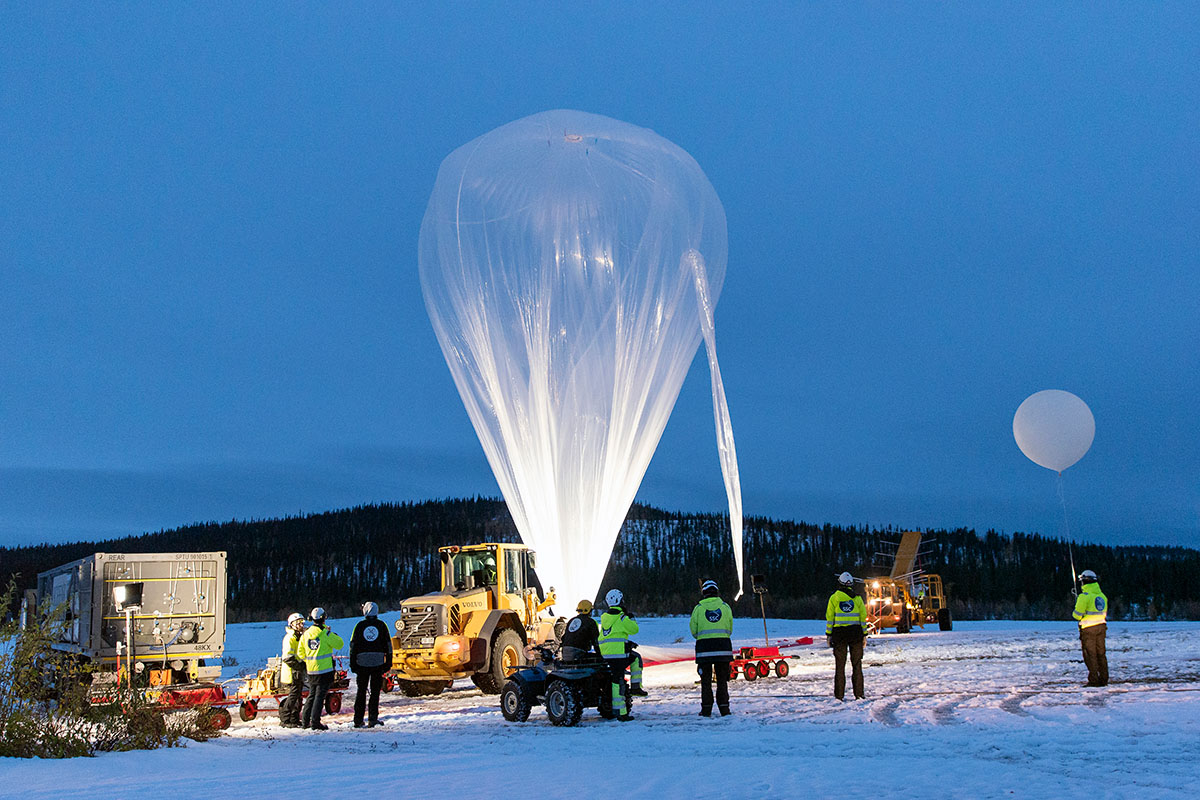Balloon Missions, News
Both BEXUS 32 and 33 were successfully launched from Esrange Space Center, despite very challenging weather with 38 cm of snowfall less than 24 hours before the first launch.
REXUS/BEXUS is a bilateral student program between the German Aerospace Center (DLR) and the Swedish National Space Agency (SNSA). The program gives European students the opportunity to fly their experiments aboard both rockets and balloons with the support of expertise from SSC, DLR Moraba and ESA.
In total, eight different experiments was launched on the two balloons BEXUS 32 and 33.
On board were the following experiments (Links refer to LinkedIn):
HERCCULES: Universidad Politécnica de Madrid
SBGA: Technical University of Munich
HERMES: HERMES – REXUS/BEXUS Programme
ROMULUS: Sapienza Università di Roma
ALMA: ALMA on BEXUS 33
CASTOR: STAR Dresden e.V.
SPACIS: SPACIS- REXUS/BEXUS Programme
TOTORO: Totoro to Space
The balloon launches were very successful and all participating universities managed to carry out their experiments exactly according to plan. However, it is too early to comment on the results of the experiments at the moment.
One of the experiments on board BEXUS 33 was ALMA, Atmospheric Laser Measurements of Aerosols, where a low-cost detector for various particles in the atmosphere has been developed.
– Normally a sensor like that cost thousands and thousands of euros and what we are trying to do is to completely design it from scratch and make it very cheap and with open source, sager Fabian Guse, student at Luleå University of Technology.
The Technical University of Dresden in Germany had also developed sensors for measurements in the stratosphere. Ozone and humidity were measured, where it would prove to be complicated to measure the humidity at such a high altitude. The reason is that the sensors have to be stored moist, which at the same time is difficult as water boils at around 8 degrees at such an altitude.
Another experiment from the University of Porto, Portugal, looked at how infrasound travels through the different layers of the atmosphere. In this case up to the stratosphere where the balloon traveled. From speakers on the Esrange, infrasound was emitted and they were then detected by the instruments on board the balloon.
– We want to be able to detect natural transmit of infra sounds. For example, some animals are capable of transmitting these sounds and it could be useful to monitor them. Various natural phenomena such as avalanches, earthquakes and eruptions also transmit these sounds, says Fransisco Colino.
Read more about the various experiments on BEXUS 32 and 33 by following the links above.

